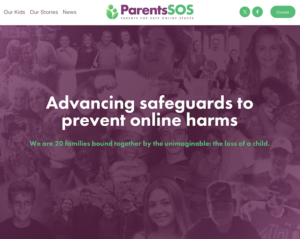Suicide is the leading cause of death for Canadian children ages 10-19 years. The suicide rate for Canadian girls age 10-14 has doubled over the past 30 year period, as has the rate for teens age 15-19 years. While suicide rate for boys has decreased 25-50%, boys die by suicide 2-3 times more frequently than girls. A college who works in a pediatric hospital recently told me that her most frequent referral for inpatient admission is for attempted suicide, the youngest being 9 years of age. The reasons behind his unprecedented rise in suicide by Canadian youth are most likely complicated and multifactorial, but no one can dispute that there is a ‘sadness’ of epic proportion seeping insidiously across our great nation. In the near future, teen suicide will likely be termed ‘epidemic’, right alongside child obesity (1 in 4), mental illness (1 in 7), developmental delay (1 in 3), sleep deprivation (3 in 4), attention deficit (1 in 5), autism (1 in 49), and learning disability (2 in 4). Concurrent with declining mental and physical health of Canadian children, is a rise in use of entertainment-based technologies, with teens using an average of 9 hours per day. Tech addiction rates are now at 1 in 11 for the 8-18 age population. Sedentary, overstimulated, isolated and neglected, the ways in which we are raising and educating new millennium children with technology, are no longer sustainable. We have become a society of parents, educators, and health professionals who no longer appear interested in promoting child wellness. So attached are we to our own devices, a wave of Tech Neglect is sweeping across our nation, with children and youth struggling to survive.
In my clinical work as a pediatric occupational therapist in daycares, preschools, and school-based settings, I am witnessing escalating use of not only dubious, poorly researched, industry driven ‘EdTech’, but also unrestricted and prevalent use of entertainment-based tech. Despite our lovely spring weather, children are allowed to stay inside during lunch, recess and breaks, obsessed with their ubiquitous ‘device’. Children watching movies, playing violent video games, sexting, facebooking, and watching pornography are a daily occurrence, with teachers reporting they no longer feel ‘in control’ of what students do on their personal devices. In my workshops I hear teachers stories of trying to confiscate personal devices, receiving a stream of ongoing defiance, aggression, and even one student calling 911, requesting police to come to the school and “arrest” his teacher. An interesting note is that parents and teachers who report they don’t have any problems managing their child/student technology usage, are observed time and again to be high users of their own device. Both health and education administrations and government respond to my numerous attempts to provide informative research and suggestions for management initiatives by either ignoring me, or responding with a counter argument e.g. technology is the “way of the future” and therefore support continued escalating use.
An important consideration is to look at projections for these escalating trends. Stephanie Seneff, Senior Research Scientist at MIT reported that when taken into consideration the escalating autism rates of 1 in 49 boys in 2014, up from 1 in 68 boys in 2013, by 2025 autism will soar to 1 in 2 boys. While Skinner and McFaull report an overall drop in suicide rate of 1% in children and youth, suicide by suffocation by girls has increased by 8%. When we see multiple trends increasing in the areas of mental and physical health e.g. developmental delay, obesity/diabetes, depression, anxiety, adhd, autism, sleep deprivation, learning difficulties, illiteracy…all related to technology overuse, then doesn’t it seem obvious that we will see a concurrent rise in suicide? As parents and teachers grow every more attached to their devices, they are detaching from children and youth. Termed Tech Neglect, the 21st century is likely to go down as being known for the worst treatment by adults of children and youth in the history of humankind. Mahatma Gandhi is reported to have said, “The measure of a civilization is how it treats its weakest members.” Our civilization is certainly not measuring up to previous high standards of care for our children and youth.
Cris Rowan is a pediatric occupational therapist, biologist, international speaker, and author of “Virtual Child – The terrifying truth about what technology is doing to children”. Cris is CEO of Zone’in Programs Inc., providing products, workshops, staff training, and consultation services in the area of technology overuse by children. Cris can be reached at info@zonein.ca.
Research References
- Anderson, C.A., Shibuya, A., Ihori, N. Violent video game effects on aggression, empathy, and prosocial behavior in eastern and western countries: a meta-analytic review. Psychology Bulletin. 2010;136(2):151-73
- Bristol University: School for Policy Studies News (2010). Available at: http://www.bristol.ac.uk/sps/news/2010/107.html.
- Christakis DA, Zimmerman FJ, DiGiuseppe DL, McCarty CA. Early television exposure and subsequent attentional problems in children. 2004; 113 (4): 708-713.
- Chonchaiya, W. et. al. Elevated background TV exposure over time increases behavioural scores on 18 month-old toddlers. ACTA Paediatrica. 2015; 104:1039-1046.
- Common Sense Media – Media Use Census. (2015). U.S. teens use an average of 9 hours of media per day. Available at: https://www.commonsensemedia.org/about-us/news/press-releases/landmark-report-us-teens-use-an-average-of-nine-hours-of-media-per-day
- Dennison BA, Erb TA, Jenkins PL. Television viewing and television in bedroom associated with overweight risk among low-income preschool children. Pediatrics 2002; 109(6):1028-35.
- Gentile D. Pathological Video-Game Use Among Youth Ages 8 to 18. Journal of Psychological Science. 2009; 3(2):1-9.
- Houtrow, A. J., Larson K., Olson, L. M., Newacheck, P. W., Halfon, N. Changing Trends of Childhood Disability, 2001-2011. Pediatrics. Available at http://pediatrics.aappublications.org/content/early/2014/08/12/peds.2014-0594.abstract
- Meyer, N. AltHealth Works. MIT Researcher’s New Warning: At Today’s Rate, Half of All U.S. Children Will Be Autistic by 2025. (2014). Available at: http://althealthworks.com/2494/mit-researchers-new-warning-at-todays-rate-1-in-2-children-will-be-autistic-by-2025/.
- Mossle T, Kleimann M, Rehbein F, Pfeiffer C. Media use and school achievement – boys at risk? British Journal of Developmental Psychology. 2010; 28 (3); 699-725.
- Sampasa-Kanyinga, H. and Lewis, R. F. Frequent Use of Social Networking Sites Is Associated with Poor Psychological Functioning Among Children and Adolescents. Journal of Cyberpsychology, Behavior, and Social Networking. July 2015; 18(7): 380-385.
- Shields M. Overweight and obesity among children and youth. Health Rep 2006; 17(3):27-42.
- Skinner, R. & McFaull, S. Suicide among children and adolescents in Canada; Trends and sex differences 1980-2008. (2012). Canadian Medical Association Journal. Available at: http://www.cmaj.ca/content/early/2012/04/02/cmaj.111867.full.pdf+html





One Response
Many parents have been convinced that preteens and teens should disappear to their rooms to live their lives on phones talking with peers, believing that older kids need tech and peers more than their family. But cut off from family, living in a cyber world of harassment and pressure to sext, our kids inevitably have problems, one of them being thoughts of suicide. Thanks for this Cris.